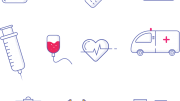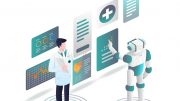As we step into the future of healthcare, anticipations are high for a continued focus on language services and accessibility. There is not one issue that is rising to the top these days, but rather a plethora of them that healthcare executives are watching closely. Here are six areas of focus that we believe are top of mind for the industry.
Qualified Medical Interpreters as Integral Care Team Members
The industry must normalize not just utilize medically trained interpreters – and make sure these professionals are integral members of the care team for patients. Interpreters play a crucial role in supporting providers to achieve their goals, bridging the gap between medical jargon and patient understanding. The interpreter is set to become an indispensable part of the healthcare narrative.
Health Equity is a Driving Force
The disparities in access to quality healthcare services among diverse populations have become increasingly apparent, highlighting the critical importance of addressing language barriers as a key component of achieving health equity. Language barriers can exacerbate existing disparities, hindering individuals with limited English proficiency from understanding their diagnoses, treatment options, and preventative care measures. In response to this, healthcare organizations must prioritize the enhancement of language services to ensure that all patients receive equitable access to healthcare information and services, regardless of their linguistic background. By investing in qualified medical interpreters, healthcare institutions can bridge the communication gap, empower patients to make informed decisions about their health, and ultimately advance the goal of achieving health equity for all individuals, regardless of language or cultural differences.
Human Interactions versus Automation and AI
The healthcare industry is at a crossroads with automation and AI taking center stage. Providers are actively seeking ways to employ these technologies for enhanced customer experiences and operational efficiency. While embracing automation and AI, the industry emphasizes that these technologies are supplements, not replacements for human interpreters. Safely and responsibly leveraging AI can create more language access points to effectively engage patients throughout their healthcare journey. AI tools can contribute to personalized medicine by tailoring treatment plans to individual needs and demographics, ultimately improving patient outcomes and ensuring equal access to healthcare information and support for all individuals. And, while AI is certainly a valuable technology solution in healthcare, it cannot replace medically trained human interpreters.
Integration Redefined
Efficiency remains a guiding principle, and healthcare providers continue to seek even more seamless integrations with EHR platforms such as Epic and Cerner. The goal is clear – simplify language access to elevate the quality of patient care. The demand for streamlined processes will drive innovation in the integration landscape.
Empowering the Deaf and Hard of Hearing Community
The strong advocacy from the deaf and hard of hearing community will persist, propelling advancements and investments in technology and qualified medical interpreters. Noteworthy improvements in advanced technologies have already been visible, yet the indispensability of the human touch in critical interactions, deciphering facial expressions and cultural subtleties, will remain unchanged, and in fact will be required.
Education and Training Initiatives
Initiatives are gaining momentum to train bilingual individuals as we continue to acknowledge the scarcity of qualified medical interpreters. Collaborations with nursing schools and healthcare training programs aim to instill cultural sensitivity and language access awareness from the early stages of healthcare professionals’ careers. The industry is equipping bilingual staff to become credentialed and legitimized in their roles as healthcare professionals being able to provide their particular service in the preferred language of the patient – rather than just provide ad hoc support and services — such as utilizing family members or untrained or qualified interpreters.
The collaboration between language service providers, healthcare institutions, and technology will indeed play a pivotal role in shaping a more inclusive and efficient healthcare landscape this year. In an increasingly diverse society, language barriers can pose significant challenges to accessing healthcare services and obtaining accurate medical information. By partnering with language service providers, healthcare institutions can ensure that language is not a barrier to care, facilitating communication between patients and healthcare providers regardless of linguistic differences.
About the author
With a deep passion for serving the deaf and hard of hearing community and those facing language barriers, Kat Jackson is the Vice President of Language Operations at AMN Healthcare, the Language Services division, leading a team that supports thousands of interpreters in over 200 languages and several modalities.





